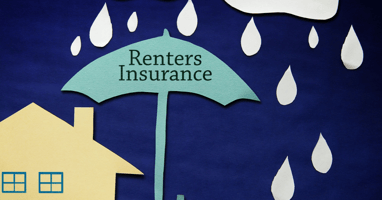Military Housing
So You’re Managing HUD Housing Now: What You Need to Know to Succeed
Whether you’re expanding your portfolio or unexpectedly inheriting new assets, stepping into the role of managing HUD housing brings a unique set of responsibilities, challenges, and—yes—opportunities. Managing HUD (U.S. Department of Housing and Urban Development) properties is not just about property management as usual. It’s a deeply regulated, mission-driven space where compliance meets compassion.
If you’ve recently found yourself managing HUD properties by acquisition, merger, or reassignment, this guide will help you orient yourself quickly and effectively. Below, we’ll walk through the key things you need to know to keep your properties compliant, your residents supported, and your business healthy.
What Is HUD Housing?
Let’s start with the basics. HUD housing typically refers to residential properties that are subsidized, insured, or financed by the U.S. Department of Housing and Urban Development. These properties are part of the federal government’s mission to provide affordable, safe, and decent housing for low-income individuals and families.
HUD housing can come in many forms:
- Project-Based Section 8 – Rental subsidies tied to specific units.
- Public Housing – Owned and operated by Public Housing Authorities (PHAs).
- Multifamily Housing with HUD-Insured Mortgages – Privately owned properties financed under HUD programs.
- LIHTC (Low-Income Housing Tax Credit) properties that also have HUD funding or oversight.
The common thread is a high level of regulatory oversight and a need for specialized knowledge in compliance, reporting, and resident relations.
The First 90 Days: What to Prioritize
When you take over management of HUD properties, your first three months are critical. Here’s what you should focus on:
1. Understand the Contracts
HUD properties typically operate under a Housing Assistance Payment (HAP) contract. This document outlines your responsibilities, contract rent amounts, contract terms, and any special conditions.
2. Evaluate Compliance Status
HUD regularly audits and inspects properties. If your property is out of compliance, HUD may have already flagged issues you’ll need to address. Start by requesting the most recent:
- REAC inspection scores (Real Estate Assessment Center)
- MOR reports (Management and Occupancy Reviews)
- Financial audits
3. Meet the Residents
Take time to meet your residents and listen. You’ll gain invaluable insights about the property, management history, and potential challenges. Building trust early on helps you manage tenant relationships more smoothly down the line.
The Compliance Landscape: What You’re Now Responsible For
HUD compliance is not just a checklist—it’s a discipline. You’ll be expected to uphold fair housing regulations, perform annual certifications, and maintain pristine records. Here are the most critical areas to understand:
1. Tenant Eligibility and Certification
Each household in a HUD property must qualify based on income and other criteria. Your go-to resource is the HUD Handbook 4350.3 REV-1. Look for:
- Initial certifications
- Annual recertifications
- Interim recertifications
2. Rent Calculations and Utility Allowances
HUD uses a standardized formula to determine how much rent tenants pay and how much HUD subsidizes. Utility allowances must also be factored in and updated regularly. Check HUD’s Utility Allowance Guide for more.
3. Fair Housing and Non-Discrimination
HUD housing must comply with the Fair Housing Act and related laws, including:
4. Physical Standards and REAC Inspections
HUD properties must meet Uniform Physical Condition Standards (UPCS). REAC inspections can be unannounced and scored on a 100-point scale. A low score can trigger increased oversight or enforcement actions.
What’s Different from Market-Rate Management?
Managing HUD housing is a fundamentally different discipline from managing conventional multifamily units. Here’s how:
|
Area |
Market-Rate |
HUD Housing |
|
Leasing |
Simple income/rent checks |
Deep income verification, background checks, and eligibility |
|
Rent Collection |
Tenant pays full rent |
HUD pays a portion; tenant pays remainder |
|
Vacancies |
Loss of revenue |
Potential loss of subsidy, need to justify turnover delays |
|
Inspections |
Internal standards |
Subject to REAC inspections and audits |
|
Resident Services |
Optional |
Often tied to mission-based goals and community programs |
Common Pitfalls for New HUD Managers
Here are the most common mistakes new HUD property managers make:
1. Underestimating Documentation Requirements
Everything should be documented: tenant files, maintenance records, reasonable accommodations, certifications, and more. HUD’s Tenant File Checklist can help.
2. Missing Deadlines
HUD imposes strict timelines for certifications, rent increases, and inspections. TRACS and EIV systems are essential tools for staying current.
3. Lack of Staff Training
Use HUD-approved training providers like NCHM, Quadel, or Nan McKay to get your team up to speed.
4. Not Leveraging Technology
Many conventional property management systems aren’t designed for HUD compliance. Look for HUD-compliant platforms or modules that integrate TRACS, EIV, and rent adjustment workflows.
What Systems Should You Put in Place?
To stay compliant and efficient, you need strong systems. Here’s what to implement:
- TRACS/EIV integration – TRACS 202D is the current version you’ll need to comply with.
- Internal audits – Use tools like HUD’s MOR Preparation Checklist to self-audit quarterly.
- Resident engagement tools – Consider platforms that support HUD notices, multilingual communication, and maintenance ticketing.
- Maintenance logs and REAC prep – Tools like HUD’s REAC inspection checklist are critical.
The HUD Language You Need to Know
The following are important HUD acronyms and terms you’ll encounter:
- HAP – Housing Assistance Payment
- MOR – Management and Occupancy Review
- REAC – Real Estate Assessment Center
- TRACS – Tenant Rental Assistance Certification System
- EIV – Enterprise Income Verification
- OCAF – Operating Cost Adjustment Factor
- TSP – Tenant Selection Plan
Advice from the Field: Veteran Managers Weigh In
“Take compliance seriously from day one. You can’t fix a failed audit retroactively.” — Angela C., Regional Manager, 20+ years in HUD housing
“Hire or partner with a compliance specialist. It’s not an expense—it’s insurance.” — Marcus L., Owner-Operator of Affordable Communities
“Don't treat this like conventional multifamily. Learn the mission. Know the people. That’s the heart of HUD housing.” — Dana P., Executive Director, Nonprofit Housing Agency
The Big Picture: Your Role in a National Mission
HUD compliance is complex. But it’s also deeply impactful. You’re part of a national effort to provide safe, stable, and affordable housing. Your role matters.
If you’ve just taken on HUD housing, here are five things you can do this week:
- Read the HUD Handbook 4350.3
- Review your HAP contract
- Audit your tenant files using HUD’s checklist
- Schedule compliance training
- Talk to a compliance consultant or software provider familiar with TRACS/EIV


